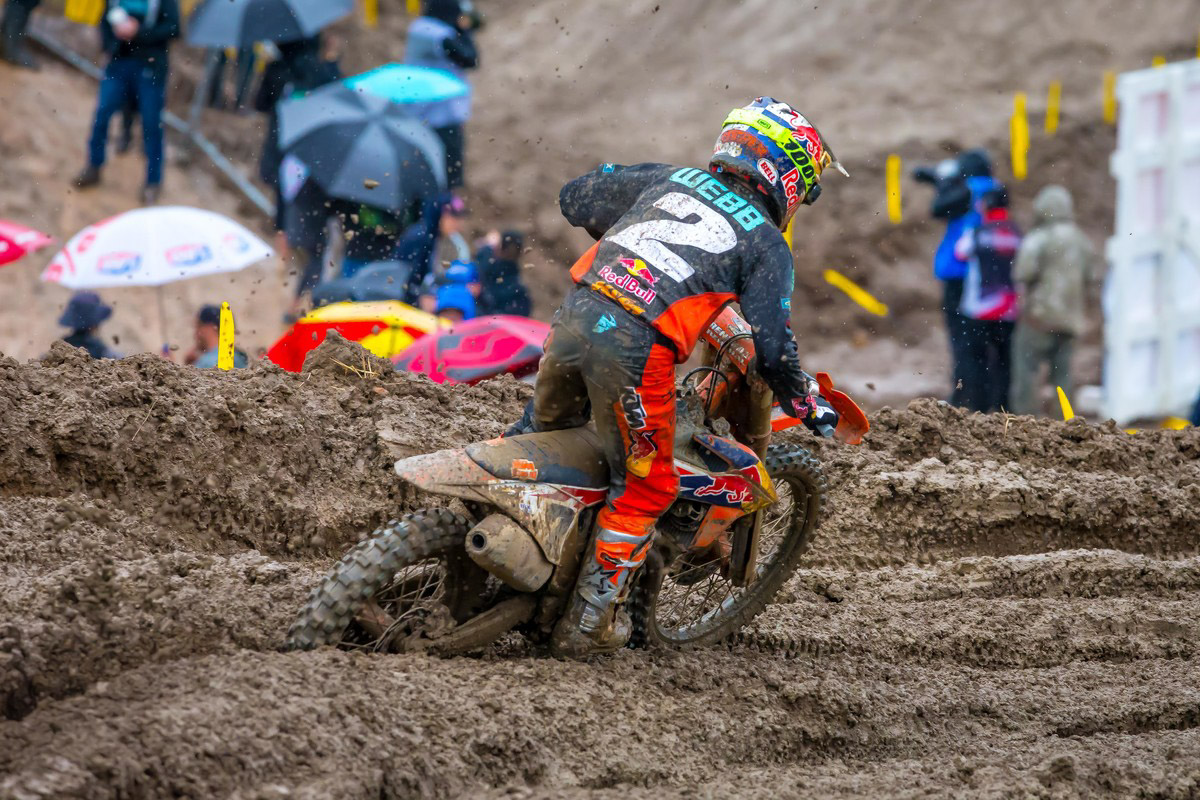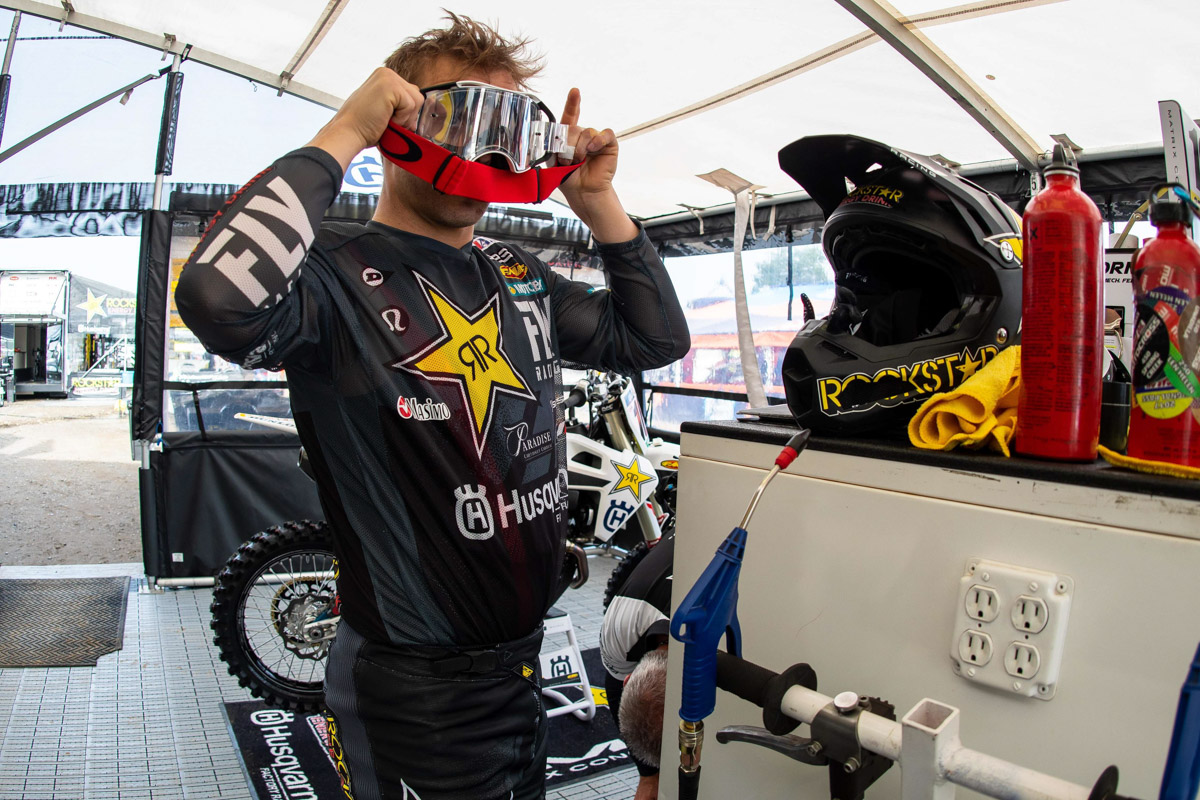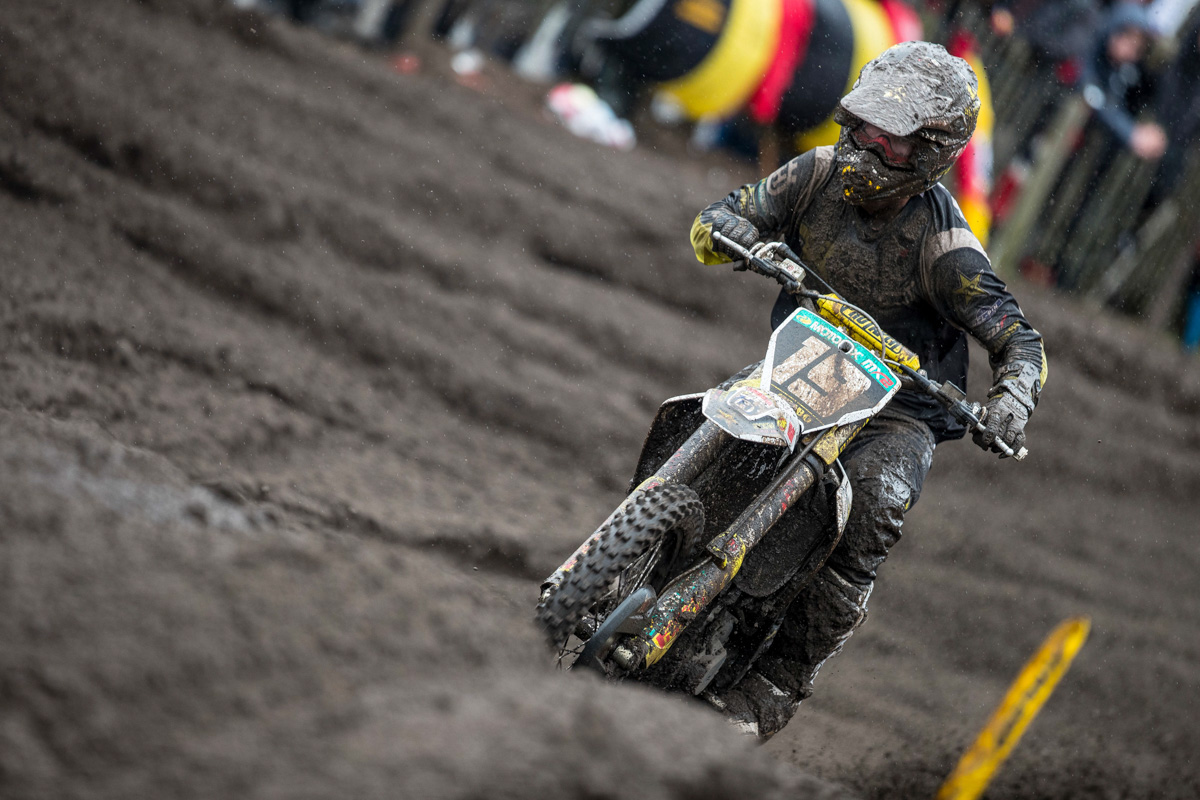The Complete Guide to Mud-Race Preparation

.jpg)
Heading into a day of mud riding can be daunting with so many elements to take into consideration, but by taking a selection of steps in preparation, it will make race day that much less stressful.
Mud preparation for your motocross bike
Mud preparation for your motocross bike can be the difference between finishing a race, or being stuck out on the track with a bike that won't run. That's why it's incredibly important to take precautions with your dirt bike ahead of a mud-race, which will give you the best chance of crossing the finish line.
Handguards: One of the first things you'll want to do for a mud-race is to install a pair of handguards. Some riders use handguards for every race, while some just use them in gnarly conditions, like mud races. The handguards will obviously keep your hands protected as possible, while also preventing them from getting covered in heavy dirt.
Another key benefit of handguards in muddy conditions is preventing dirt clogging up your controls - it's easy for mud to get into your levers and throttle, and handguards can help deflect that mud elsewhere.

Add foam: This is a tip directly from the pros, and it's adding foam to key areas of the bike so mud can't get clogged up. Most riders will install a foam insert, like the DRC skid plate foam, between the engine and the skid plate/bash plate, and to go one step further, some will even slice up the foam and fit it to the bottom edges of the engine and frame.
Fender foam is also another popular option, and one that you'll see on all factory machines in a mud race. Fender foam stops mud building up underneath the fenders, which can become increasingly heavy as mud continues to stick. Additionally, you should also spray your plastics with a silicone spray, which helps mud to slide off rather than build up on your bike.
Block airbox breather holes: Depending on how wet the conditions are, and also depending on the orientation of your dirt bike's side number plates and any breather holes for the airbox, it's a good idea to block them out with tape to prevent unwanted from entering.
It may come at the cost of a slight reduction in performance (you probably won't be able to notice in such conditions anyway), however it's far better than your bike coming to a holt because water was able to get through the air filter.

Extras to consider: There are a few extra precautions and products to consider for a mud-race - the first being a mud scraper. This is essential, especially if you don't have access or time to wash your bike between motos - it will allow you to scrape all the mud from beneath your fenders.
The next thing is a pressure washer - if it fits in your budget, we always recommended kitting yourself out with a petrol pressure washer so you can wash your bike between races. This will come in so handy on those muddy days and will help to prevent mechanical failures from excessive mud build-up.
And the third and final thing is pack spare brake pads! Brake pads are something you should have as a spare anyway, but in muddy conditions, even a fresh set of brake pads can be worn down to the metal before the end of the day due to the additional abrasiveness of the mud and dirt - so if you haven't installed a fresh set before the event, you may need to change them between races.
Mud preparation for your gear
Just as it's important to prepare your bike to make it through an entire day of mud racing, it's also essential to prepare your gear so you can finish each and every race.

Goggles: The number one piece gear to prepare for a mud-race is your goggles. Whether you decide to use tear-offs or roll-offs (which we recommend), ensure you have enough pairs of goggles for each session during the day and that they are prepared prior to the weekend.
The last thing you want to be doing is trying to clean and set-up a dirty set of goggles in between motos when its cold, wet and you've got mud everywhere - this will just make the day more difficult and promote the chances of a goggle failure.
If you have a mechanic on race day, make sure they have a fresh set of goggles on them, so in the event of ditching your goggles, you can pull into the mechanics' area and put on a fresh pair, allowing you to finish the race and avoid any nasty eye injuries.
Helmet: There are two types of preparation you can do to your helmet for mud racing, the first being extending the peak. Most riders do this by using an old goggle lens, and simply taping it to the end of the peak to give it additional length. This allows you to put your head down when your getting roosted, blocking mud that would otherwise fill your goggles in.
The second option is adding foam to the top of your helmet and peak, which prevent mud from building up on your helmet and making it rather heavy. Your head and neck will thank you for taking this step!
Gear set: There isn't too much when it comes to gear set preparation, but we do recommend packing a spare set or two - even if it's an old set! You're bound to get filled in and covered with mud, and that's not going to feel nice when you're wearing that gear all day. If you can change between motos, or halfway during the day, it will make mud racing just a little more comfortable.
Rag: The last piece of mud preparation for your gear set is sliding a rag into the back of your pants. You've probably seen all the pro motocross riders do this during mud races, and it's just as common at your local club day. By slipping a rag in your pants, you can wipe mud off your controls and gloves in the event of a race, while you can also use it to quickly wipe any mud away on your goggles.